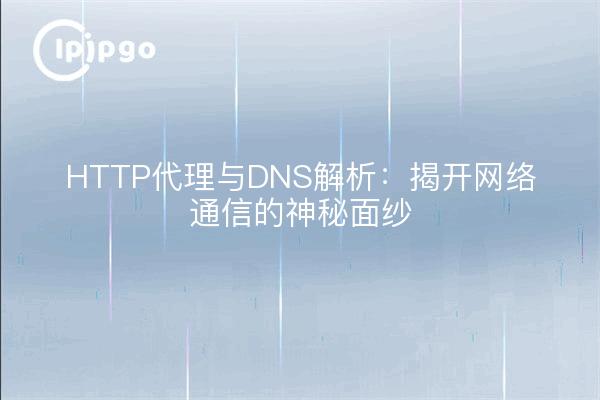
HTTP proxy and DNS resolution play a crucial role in modern web communication. They are like tour guides and translators in the web world, helping us access various web resources smoothly. However, the relationship between HTTP proxy and DNS resolution is not immediately obvious. So how do they work together? Let's unravel this mystery together.
What is an HTTP proxy?
An HTTP proxy is an intermediate server that passes HTTP requests and responses between a client and a destination server. With an HTTP proxy, users can hide their real IP address and use the proxy server's IP for access. This not only improves user privacy, but also bypasses certain network restrictions, acting like an invisibility cloak in the online world.
Basic Concepts of DNS Resolution
DNS (Domain Name System) resolution is the process of converting human-readable domain names into computer-recognizable IP addresses. When we type a web address into a browser, DNS resolution helps us find the corresponding IP address, as if we were looking for a specific address in the online world.
How does the HTTP proxy handle DNS resolution?
When using an HTTP proxy, DNS resolution can be done either on the client side or on the proxy server side. This depends on how the proxy is configured:
- Client DNS resolution:The client first performs DNS resolution to convert the domain name to an IP address and then sends the request to a proxy server. The proxy server then forwards the request to the destination IP address.
- Proxy server DNS resolution:The client sends the request directly to the proxy server, which is responsible for performing DNS resolution and forwarding the request to the destination IP address.
The choice usually depends on the specific usage scenario and requirements. For example, a proxy server for DNS resolution can hide the target domain name accessed by the client and improve privacy.
HTTP Proxy and DNS Resolution Challenges
While the combination of HTTP proxies and DNS resolution offers great convenience, there are some challenges. For example, DNS leakage may lead to privacy risks, and DNS requests may still be resolved over the local network even when a proxy server is used. In addition, some proxy services may not support encrypted DNS requests (e.g., DoH or DoT), which may compromise data security.
How to optimize the use of HTTP proxies with DNS resolution
To better utilize HTTP proxy with DNS resolution, we can take the following steps:
- Choose a proxy service that supports DNS encryption to improve the security of data transmission.
- Choose the appropriate DNS resolution method (client-side or proxy server-side) according to your needs.
- Regularly check and update the proxy server settings to ensure its stability and security.
summarize
HTTP proxy and DNS resolution are indispensable components of network communication. By configuring and using them wisely, we can improve the efficiency and security of network access. In the rapidly developing network world, understanding and mastering these technologies will help us better cope with various network challenges and swim in the ocean of information.








